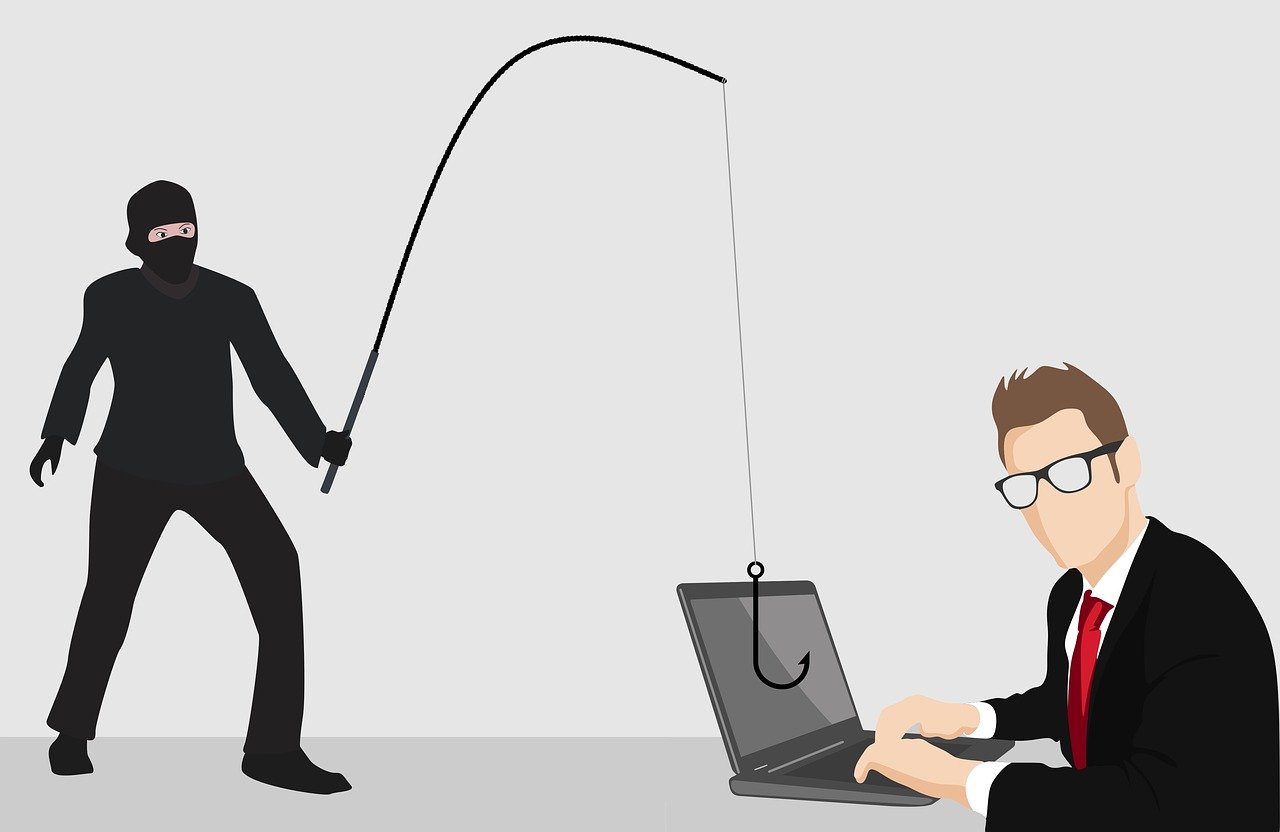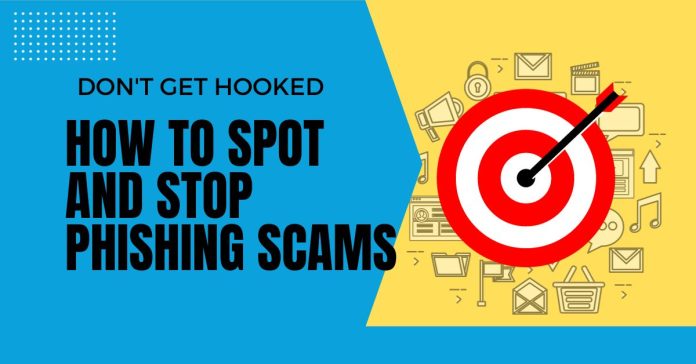Learn how to spot and stop phishing scams in this post.
Dangers hide behind every digital corner. Recently, thousands of people have fallen victim to Instagram hacks related to forex and money-making scams, leaving them with no way to recover their accounts.
Still, one of the most insidious threats we face is phishing scams, which have become increasingly sophisticated in recent years. However, as threats evolve, so too can our defenses. By understanding the mechanics behind these deceptions, we can avoid getting reeled in.
Let’s explore.
Table of Contents
Fishing Out Safety: How To Protect Yourself

We’ll start with the good news: there are ways to minimize spammers’ abilities to reach you – along with plenty of practical ways to stop spam when you know you’re being targeted.
To prevent further attacks, ensure your software and systems are regularly updated. These updates often incorporate security patches tailored to counter new phishing strategies. Cybercriminals are continually evolving, and staying updated gives you a better chance of defending against their latest tactics.
Consider implementing two-factor authentication or two-step verification processes wherever feasible. This extra layer ensures that even if a scammer gains access to your password, they’re still locked out. Regularly monitoring your bank and credit card statements can also alert you to unauthorized activity.
Sharing information about emerging scams within your community can be immensely beneficial. The more people are aware, the harder it becomes for scammers to find success. Word of mouth can act as an effective deterrent against these cyber threats.
Lastly, if ever in doubt about a message’s legitimacy, it’s wise to reach out to the alleged sender directly – but always through their official channels. This action ensures you communicate with genuine entities and do not inadvertently play into a scammer’s hands. Remember that proactive steps and awareness are your best defence against these deceptive tactics. Bypass any contact details given in the suspicious message itself.
In this ongoing round of cat and mouse with phishers, knowledge is our most potent weapon. As these scammers sharpen their tools and tactics, our ability to recognize and evade their traps will keep us safe. It’s a matter of safeguarding not just our personal information but also our digital peace of mind. Remember, the best defence is not to bite.
The Art Of Deception: Understanding Phishing

Phishing is, fundamentally, a deceptive act. Scammers often disguise themselves as reliable institutions, putting on a performance designed to deceive us. Their aim? To coax us into voluntarily handing over our personal or financial details.
That might manifest as an urgent message from a “bank” alerting us to suspicious activity or an enticing offer that’s seemingly too good to pass up. The core intention remains consistent: capitalize on our trust to gather valuable data.
But where did this crafty tactic originate? The term “phishing” is believed to have been coined in the 1990s, and it was an evolution of the word “fishing”, aptly capturing the idea of throwing out bait and waiting for a bite.
With the advent of the internet and email communication, it became a popular avenue for criminals to exploit. The process often involves a blend of technical subterfuge and social engineering.
Through persuasive and believable narratives, combined with seemingly authentic website interfaces or email templates, scammers increase their chances of success, making it difficult to spot spam – particularly in the heat of the moment. They play on emotions such as fear, urgency, or even greed to drive swift action without second-guessing.
In a world where digital interactions are increasingly common, the art of phishing has been refined and diversified, making it an ever-present threat in our online engagements.
Crafty Lures: Types Of Phishing Scams

Spear phishing is a tailored deception. Unlike generic phishing attempts, the scammers are well-researched, focusing on individuals with customized messages. They might leverage tidbits from social media or public records to make their ruse more believable.
Whaling, on the other hand, seeks bigger fish. The individuals in the crosshairs here are often high-ranking company officials or celebrities. The deception employed is often deep and intricate, disguised as high-stakes financial or business matters.
Then there’s vishing, which swaps digital mediums for voice. Scammers, often sounding remarkably authoritative, use phone calls to draw out personal or financial information.
Smishing, a blend of “SMS” and “phishing,” is another tool in the scammer’s kit. This method involves deceitful text messages that trick recipients into divulging information or downloading malicious apps.
Detecting The Deceptive: Red Flags In Phishing Attempts
Offers that sound too good to be true often are. If something seems excessively generous or carries an aura of undue urgency, caution is warranted.
A close examination of URLs can also be revealing. Fraudulent sites might have slightly altered or misspelled domains that, at first glance, appear genuine.
Then there’s the matter of communication quality. Legitimate entities typically ensure their communications are error-free, but scammers might not be as thorough. Poor grammar or spelling mistakes can be telltale signs.
Moreover, any unsolicited request for sensitive data should raise alarms. Authentic organizations rarely, if ever, solicit personal details via email or other such messages. Protecting yourself from phishing attacks goes beyond just being wary of suspicious emails. It’s about creating a comprehensive safety net around your digital life.
Phishing Scams: Frequently Asked Questions
What is a phishing scam?
A phishing scam is a cyberattack where scammers pretend to be trusted institutions—such as your bank, delivery service, or even a friend—to trick you into sharing sensitive information, including passwords, bank details, or credit card numbers. The goal is to “fish” for your data through deceptive messages that look legitimate.
How can I tell if an email or message is a phishing attempt?
Look for red flags such as poor grammar, urgent requests, suspicious links, or offers that seem too good to be true. Always check the sender’s email address closely—scammers often use lookalike domains that differ by just one or two letters from the real thing.
What are the most common types of phishing scams?
Some popular forms include:
- Spear phishing: Personalized attacks targeting specific individuals.
- Whaling: Attacks on high-profile individuals, such as CEOs.
- Vishing: Phone-based scams pretending to be from trusted institutions.
- Smishing: Text message scams that lure you into clicking malicious links or downloading apps.
What should I do if I think I clicked on a phishing link?
Immediately disconnect from the internet, change your passwords, and run a full antivirus scan on your device. Next, contact your bank or any affected institution to report possible breaches, and monitor your accounts for suspicious transactions.
Why do phishing scams work so well?
Phishing succeeds because it exploits human emotions, such as fear, urgency, and curiosity. Scammers use believable stories or official-looking designs to lower your guard and prompt instant reactions—often before you’ve had time to think.
How can I protect myself from phishing scams?
- Keep your software and devices updated.
- Enable two-step verification on your accounts.
- Avoid clicking on suspicious links or attachments.
- Verify messages through official channels instead of replying directly.
- Share awareness with friends and family—education is your first line of defence.
Can phishing happen on social media platforms?
Absolutely. Many phishing attacks now occur on platforms such as Instagram, Facebook, or WhatsApp. Scammers may impersonate brands, influencers, or even your friends to lure you into scams involving fake giveaways, forex offers, or hacked accounts.
What’s the difference between phishing and spam?
Spam is typically unsolicited and often harmless advertising or bulk messages. Phishing, however, is a malicious activity—its primary aim is to steal personal or financial information. While all phishing can be considered spam, not all spam is phishing.
How can I report a phishing scam?
You can report phishing attempts to your email provider (for example, by clicking “Report Phishing” in Gmail or Outlook). You can also report to your local cybersecurity agency or consumer protection bureau. Reporting helps prevent others from falling victim.
What’s the best long-term way to stay safe online?
Stay educated and alert. Cybercriminals evolve daily, but so can you. Continue learning about new scams, remain cautious of unsolicited messages, and always verify information before trusting it. Remember: when in doubt, don’t click—think first. 🛡️
Conclusion
Phishing scams are evolving faster than ever, but awareness remains your strongest defense. Every suspicious message, email, or call is a test of vigilance — and passing that test means protecting not just your data, but your peace of mind. 🧠💪
Remember: pause before you click, verify before you share, and always use official channels for confirmation. The moment you stop taking every message at face value, you take the bait out of the scammer’s hook. 🎣
Stay smart, stay alert, and don’t get hooked! 🚫📧
INTERESTING POSTS
- Ultimate Guide To Hide Files On Windows Computer (Like James Bond)
- Hacks That Can Help Outsmart Deepfake Videos
- What Are Phishing Scams And How You Can Avoid Them?
- How To Detect Email Phishing Attempts (Like A Geek!)
- Great Tools To Help Protect Yourself And Your Devices
- How To Identify And Avoid Online Gaming Scams
About the Author:
Gina Lynch is a VPN expert and online privacy advocate who stands for the right to online freedom. She is highly knowledgeable in the field of cybersecurity, with years of experience in researching and writing about the topic. Gina is a strong advocate of digital privacy and strives to educate the public on the importance of keeping their data secure and private. She has become a trusted expert in the field and continues to share her knowledge and advice to help others protect their online identities.







